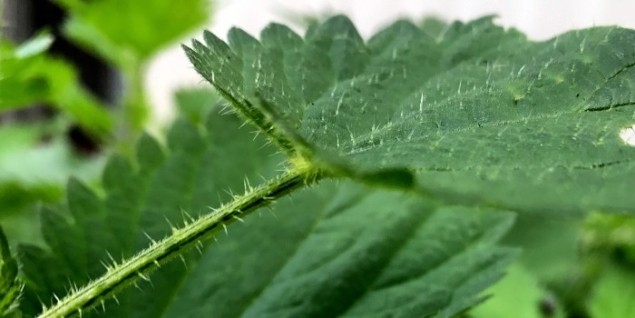
From virus spikes to narwhal tusks, the stingers of many living organisms have the same basic mechanical design. Now a team of physicists led by Kaare Jensen has studied the mechanical properties of more than 200 natural and manmade stingers to discover why.
The researchers at the Technical University of Denmark found a clear relationship between the structural properties of stingers large and small – thereby solving a long-standing evolutionary mystery. As a bonus, their work could lead to artificial structures that better mimic the desirable properties of natural stingers.
A staggering variety of living organisms come equipped with pointed outgrowths for purposes ranging from catching prey to combating rivals. These stingers range in size from tens of nanometres to several metres, yet are remarkably similar in terms of their design and mechanical properties – even in very different organisms. This similarity also extends to artificial structures such as nails and pointed weapons.
Resistance to elastic deformation
To understand this ubiquity of design, Jensen’s team experimented with artificial stingers made from the polymer polydimethylsiloxane and compared their results with previous studies of natural stingers. For simplicity, the team define a stinger as being straight and rigid with a long, slender tapered shape and a roughly circular cross-section. Their definition also includes strong resistance to elastic deformation.
Within these constraints, they constructed a database of stingers from over 200 objects, including viruses, algae, and larger vertebrates and invertebrates: both marine and terrestrial. They also included manmade objects such as nails used in construction, hypodermic needles, and spears from ancient warfare.
The experiments revealed how stingers buckled and broke when subjected to a load. When combined with the results of previous studies described in the scientific literature, these data revealed an optimal relationship between the diameters, lengths, stiffnesses, and friction forces per unit area of different stingers.

Metals toughen spider’s silk
A crucial insight revealed by the study is that stinger structures exist at the mechanical limits imposed by friction, elastic stability, and costs incurred by maintaining tissue. This constraint ultimately explains the universality found in stinger structures: no matter their size, living organisms evolve until their outgrowths reach these limits, causing their stingers to converge at the same shape.
Having explained this long-standing mystery, Jensen’s team will now explore how their findings could apply to biomechanics and the evolution of animal weapons, and potentially lead to new medical applications. Elsewhere, they could inform engineers as to how manmade structures which mimic natural stingers could be precisely manufactured on different scales to improve performance and reduce material costs.
The research is described in Nature Physics.
